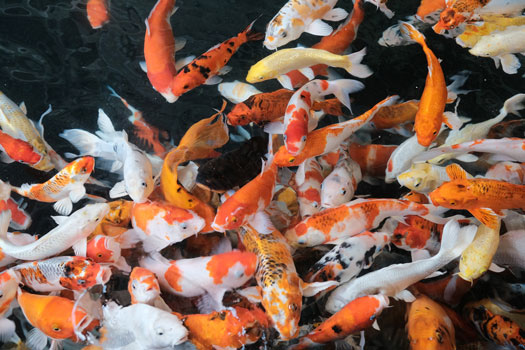- Your shopping cart is empty!
Can Koi Fish Reproduce in a Pond Environment?

Aquaculturists in the Far East have been keeping and breeding koi for centuries. This practice started in China for consumption since before biblical times, but once keepers noticed colorful mutations in a couple of carp species, ornamental ponds emerged along with domesticated and selective breeding. Japanese society in the 19th century became deeply interested in koi ponds, and the fish eventually became a symbol of friendship and affection, probably because of their mating and spawning behavior.
Even though koi breeding in the wild mostly happens as a group, keepers shouldn’t be surprised when the sole adult couple in their pond decide to reproduce. They may wait a few mating seasons before mating, but once the surviving babies turn into adults, reproduction as a group will become more common. The knowledgeable staff at Aquatic Warehouse, a leading provider of koi pond supplies, would like to share some information on how koi fish reproduce in a pond environment.
Reproductive Age of Koi
Both male and female koi will reach reproductive maturity around the age of three to four years. From this point on, they may spawn very actively if the pond conditions are suitable for mating and spawning. Although the peak age for reproduction is around the sixth year, some groups continue to reproduce past the age of 10.
Koi Mating Season
The transitional months between spring and summer are the most common for koi mating and spawning, but this is in their natural habitats. If the pond water temperature is constantly kept between 65 and 70 degrees Fahrenheit, koi will reproduce on sunny days. What this means for keepers of backyard ponds is that koi will wait until late spring to reproduce. Indoor or covered ponds where water temperatures are higher than 70 degrees won’t be conducive to mating.
Koi Mating Behaviors
Females that feel comfortable in a pond will produce eggs at the beginning of the season. Their expanded bellies will attract males, which will in turn stretch into a slimmer shape that makes their pectoral fins appear to be larger. Males will take turns with their pursuit of females. Although this behavior is competitive and may appear to be aggressive, the males won’t fight each other. Koi need some privacy for the female to release the eggs so the male can fertilize them, so it’s important to provide them with driftwood, rocks, or plants.
Koi Spawning and Hatching
Out of hundreds of fertilized eggs, dozens of young koi will survive and get a chance at growing into the juvenile stage. Some breeders remove the eggs so they can hatch away from the adults. This strategy increases the chances of survival since other pond species will feed on many of the eggs and the small fry. Innate survival skills such as hiding from larger fish need to be facilitated by rocks and plants. If the eggs aren’t removed from the pond, it’s better to cut down on filtration to stimulate plankton bloom for the babies. Alternatively, bottled bacteria and specialty food that essentially stimulates the growth of microorganisms can be added to the pond until the young fry become juveniles.
If you want to care for your pond properly and keep your koi healthy and happy for many years to come, you’ll need to have several supplies. From pond vacuums and beneficial bacteria to filtration and pumps, Aquatic Warehouse has everything you need and more. Check out what we have to offer on our website, or give us a call at 858-467-9297 to speak with one of our friendly representatives.
